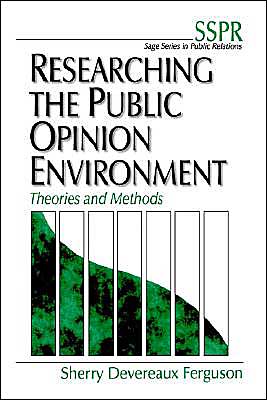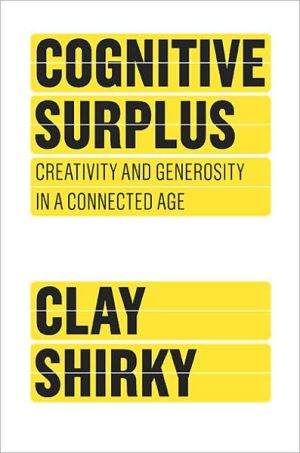Researching the Public Opinion Environment: Theories and Methods
Researching the Public Opinion Environment: Theories and Methods informs the reader on the rationale, purposes, theories, and methodologies involved in researching the public. The book is divided into four parts. Part One looks at the theories and systems relevant to opinion research. Part Two addresses the topics of monitoring and analyzing the media. Part Three describes the basics of survey research, focus groups, Delphi techniques, stakeholder assemblies and Q methodology. Part Four...
Search in google:
A textbook for graduate or upper-level undergraduate course dealing with public relations functions, the role of public relations in politics, corporate communication, issues management, political communications, or public opinion. Ferguson (communication, U. of Ottawa) combines a number of topics usually covered in different books, among them concepts related to theories of public opinion, media monitoring, survey and focus-group research, and scanning and monitoring practices. She does not cover the psychology of audiences or market research. Annotation c. Book News, Inc., Portland, OR
IntroductionixAcknowledgmentsxvPart ITheory and Systems1.Role of Public Opinion in Democratic Societies3The Classical Debate3The Modern Debate7Perceived Impact of the Media11Conclusion162.Establishing Intelligence Systems to Capture Public Opinion19Importance of Listening to Public Opinion19Sources That Feed the System21Components to Environmental Intelligence Systems30Approaches to Organizing the Intelligence Function40Conclusion45Part IIMonitoring and Analyzing the Media3.Monitoring the Media: Asking Questions51Which Publics Have Reacted?52What Do People Say About the Organization?57How Do Media Frame the Story?60What Are the Catalysts and Spin-Off Issues?76What Are the Trends in Media Coverage?77Conclusion834.Content Analysis Techniques85History and Definition of the Methodology85Steps in Conducting Content Analysis87Training and Using the Analyst126Conclusion129Part IIIResearch Methodologies5.Survey Design and Sampling133Rationale for Surveying134Selecting the Research Design136Choosing the Sample138Conclusion1456.Survey Development147Wording Survey Questions147Constructing and Ordering the Questions163Preparing Introductory Material177Conclusion1777.Survey Administration179Pretesting the Survey179Administering the Survey179Interpreting and Reporting the Results187Interacting With Survey Research Firms196Conclusion1978.Focus Groups, Delphi Technique, Stakeholder Assemblies, and Q Methodology199Focus Groups200Other Methodologies218Conclusion222Part IVTheories on the Impact of the Media9.Academic Debate Over Media Effects: The Effects Continuum225Powerful, Direct Effects Model226Limited Effects Model226Limited and Indirect Effects Model227Limited and "Direct-ed" Effects Model229Powerful and Cumulative Effects Model230Selective Reinforcement236The "Third-Person Effect"236Conclusion237Appendix A239Appendix B253References263Author Index283Subject Index289About the Authors295
\ Communications: The European Journal of Communication Research“Ferguson’s book is an interesting mix of theoretical and methodical themes related to the use of public opinion research in organizations. . . . The central focus seems to be to acquaint the reader with the most important theoretical and research technical aspects of public opinion research. . . . The book provides professional communication workers and students from business schools a simple introduction to issues of public opinion research.”\ \ \ \ \ Communications: The European Journal of Communication Research“Ferguson’s book is an interesting mix of theoretical and methodical themes related to the use of public opinion research in organizations. . . . The central focus seems to be to acquaint the reader with the most important theoretical and research technical aspects of public opinion research. . . . The book provides professional communication workers and students from business schools a simple introduction to issues of public opinion research.”\ \








